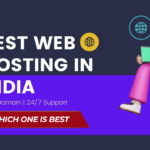In the ever-expanding digital landscape, establishing a strong online presence is crucial for individuals and businesses alike. One of the often-overlooked strategies for maximizing your online reach is leveraging the power of multiple domains through domain forwarding. This article explores the concept of domain forwarding, its benefits, and how it can be a game-changer in enhancing your visibility on the web.
Domain Forwarding
Before delving into the intricacies of domain forwarding, it’s essential to grasp the fundamental concept of a domain. A domain is essentially your web address, the online identity that directs users to your website. Domain forwarding, also known as domain redirection, is a technique where one domain is set to redirect visitors to another domain. In simpler terms, it allows you to control and manage multiple domains while ensuring that they all lead to a single, primary website.
The Power of Multiple Domains
Owning multiple domains can offer a range of advantages, from protecting your brand to increasing your online visibility. Here’s a closer look at why having multiple domains can be a valuable asset:
1. Brand Protection:
Having variations of your primary domain can safeguard your brand from potential misuse. This includes variations with different spellings, hyphens, or additional keywords. By owning these variations and implementing domain forwarding, you ensure that users who mistype or use alternate versions still end up on your main website.
2. Targeted Marketing:
Multiple domains enable you to create specialized marketing campaigns tailored to specific products, services, or geographic locations. Each domain can be optimized for a particular niche, allowing you to reach a more targeted audience and streamline your marketing efforts.
3. SEO Benefits:
Search Engine Optimization (SEO) is a critical aspect of online visibility. Having multiple domains allows you to create keyword-rich domain names that align with specific search queries. This can positively impact your search engine rankings and drive more organic traffic to your website.
4. Memorability and Easy Recall:
Short, memorable domain names are easier for users to recall. Owning multiple domains with various easy-to-remember names can help in word-of-mouth referrals and make it simpler for potential visitors to find and remember your website.
💖 You Might Also Like
Implementing Domain Forwarding
Now that the advantages of having multiple domains are clear, let’s delve into the process of implementing domain forwarding. It’s a straightforward process that involves configuring the domain settings to redirect traffic to your primary domain. Here’s a step-by-step guide:
1. Choose Your Primary Domain:
Start by selecting the main domain that represents your brand or business. This will be the domain to which all other domains will redirect.
2. Register Additional Domains:
Purchase and register the additional domains you want to use. Consider variations, relevant keywords, or domain extensions that align with your business.
3. Access Domain Settings:
Log in to the domain registrar’s control panel where you’ve registered your domains. Navigate to the domain settings or management section.
4. Locate the Forwarding or Redirection Option:
Look for the option related to domain forwarding or redirection. This might be labeled differently depending on the registrar, but it is commonly found in the domain settings.
5. Configure Forwarding Settings:
Enter the primary domain as the destination to which you want the additional domains to redirect. Some registrars allow you to choose between temporary and permanent redirects (302 and 301 redirects, respectively). For SEO purposes, a 301 redirect is generally preferred.
6. Save Changes:
After configuring the forwarding settings, save the changes. The domains should now be set up to redirect traffic to your primary domain.
7. Check and Test:
It’s crucial to verify that the domain forwarding is working correctly. Type the additional domains in a web browser and ensure they redirect to your main website. This step helps identify and address any issues early on.
Maximizing Benefits with Strategic Domain Usage
While domain forwarding provides a convenient way to manage multiple domains, strategic planning is essential to maximize the benefits. Here are some tips to make the most of your multiple domains:
1. Optimize for SEO:
When selecting additional domains, prioritize those with keywords relevant to your business or industry. This can contribute to improved SEO and enhance your website’s visibility in search engine results.
2. Create Landing Pages:
Instead of redirecting all additional domains to your homepage, consider creating specific landing pages. These pages can be tailored to the keywords or themes associated with each domain, providing a more personalized experience for visitors.
3. Track and Analyze:
Implement analytics tools to track the performance of each domain. This includes monitoring traffic, conversion rates, and other relevant metrics. Analyzing this data can help you refine your strategy and identify which domains are most effective in driving engagement.
4. Promote Consistency:
While having multiple domains, it’s essential to maintain a consistent brand image across all of them. This includes consistent branding elements, such as logos, color schemes, and messaging. Consistency fosters trust and reinforces your brand identity.
5. Utilize Subdomains:
In addition to multiple top-level domains, consider using subdomains to create a hierarchical structure. Subdomains can be dedicated to specific products, services, or regions, providing a structured approach to organizing your online presence.
6. Monitor Domain Expirations:
Keep a close eye on the expiration dates of your domains to prevent unintentional lapses. Set up reminders or enable auto-renewal to ensure continuous ownership and redirection.
Case Studies: Success Stories with Multiple Domains
To further illustrate the impact of domain forwarding, let’s explore a couple of real-world case studies where businesses have successfully leveraged multiple domains to enhance their online presence.
Case Study 1: E-Commerce Expansion
A popular e-commerce brand decided to expand its product offerings to include a new line of fitness equipment. Rather than integrating the fitness products into the existing e-commerce platform, the brand opted to create a separate website dedicated solely to fitness-related items.
The brand registered a new domain specifically for the fitness line and implemented domain forwarding to redirect traffic from the new domain to the corresponding section on the main website. This strategy allowed the brand to maintain a focused and streamlined shopping experience for customers interested in fitness products while capitalizing on the existing brand recognition of the main website.
As a result, the fitness-oriented domain attracted a targeted audience interested in fitness equipment, leading to increased sales and customer engagement. The brand successfully utilized domain forwarding to expand its product range without diluting its core brand identity.
Case Study 2: Regional Targeting
A multinational corporation with operations in various regions recognized the importance of tailoring its online presence to specific geographic markets. The company owned a generic top-level domain (gTLD) representing its global brand but wanted to create a more localized experience for customers in different countries.
The corporation registered country-code top-level domains (ccTLDs) for key markets and implemented domain forwarding to redirect users to region-specific pages on the main website. Each ccTLD featured localized content, language options, and contact information relevant to the respective region.
By adopting this approach, the corporation enhanced its online visibility in each market and established a stronger connection with local customers. The use of multiple domains facilitated a seamless transition between global and regional content, showcasing the company’s commitment to serving diverse audiences.
✨ More Stories for You
Challenges and Considerations
While domain forwarding offers numerous benefits, it’s important to be aware of potential challenges and considerations associated with this strategy.
**1. SEO Implications:
While domain forwarding can contribute to SEO efforts, improper implementation or excessive use of redirects can negatively impact search engine rankings. It’s crucial to follow best practices and ensure that redirects are set up correctly to preserve SEO value.
**2. Potential Confusion:
Managing multiple domains requires careful planning to avoid confusion for both users and internal teams. Clearly define the purpose of each domain and communicate the redirection strategy to prevent misunderstandings.
**3. Cost Considerations:
Registering and maintaining multiple domains incurs additional costs. Before investing in multiple domains, assess the financial implications and ensure that the benefits outweigh the expenses.
**4. Maintaining Consistency:
While diversity in online presence is valuable, maintaining a consistent brand image is equally important. Regularly audit and update content across all domains to ensure consistency in messaging and branding.
**5. Security Measures:
Multiple domains can pose security challenges, including the risk of domain hijacking or phishing attacks. Implement robust security measures, such as domain locking and two-factor authentication, to safeguard your online assets.
Future Trends in Domain Forwarding
As technology continues to evolve, the landscape of domain management is likely to witness new trends and innovations. Here are some potential future developments in the realm of domain forwarding:
**1. Integration with AI:
Artificial Intelligence (AI) could play a significant role in optimizing domain forwarding strategies. AI algorithms may analyze user behavior, preferences, and search patterns to dynamically adjust domain redirection for personalized user experiences.
**2. Blockchain and Domain Ownership:
Blockchain technology has the potential to revolutionize domain ownership and security. Decentralized domain registration and management on the blockchain could provide enhanced transparency, security, and ownership control for domain owners.
**3. Voice Search Optimization:
With the growing prevalence of voice-activated devices and voice search, domain forwarding strategies may need to adapt to accommodate voice-friendly domain names. Optimizing for voice search queries could become a crucial aspect of domain management.
4. Expanded Domain Extensions:
The introduction of new domain extensions could offer more creative options for domain names. Businesses may explore using these extensions strategically, and domain forwarding will play a crucial role in directing traffic to these unique domains.
Conclusion
In the dynamic world of online presence, staying ahead of the curve is essential for individuals and businesses alike. Leveraging the power of multiple domains through domain forwarding provides a versatile and strategic approach to enhancing your visibility on the web. Whether you’re aiming to protect your brand, target specific markets, or improve SEO, the careful implementation of domain forwarding can be a game-changer in your digital strategy.
As you embark on the journey of managing multiple domains, remember to prioritize consistency, monitor performance, and adapt to emerging trends. The success stories and case studies presented in this article demonstrate the tangible benefits that can be achieved through thoughtful domain management.
In the ever-evolving landscape of the internet, your online presence is a valuable asset. By harnessing the potential of multiple domains and domain forwarding, you not only navigate the digital terrain effectively but also establish a resilient and impactful online identity. As technology advances and trends shift, embracing strategic domain management will remain a cornerstone in maximizing your online presence and staying ahead in the digital realm.











